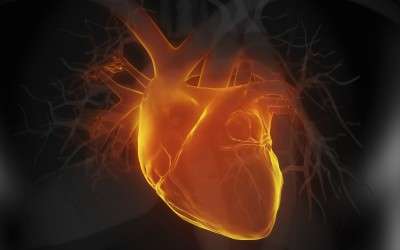Getting to the heart of genetic cardiac defects

(Medical Xpress)—With modern surgical techniques increasingly able to save babies born with heart defects, biomedical researchers are hunting for ways to manage the subsequent rising prevalence of congenital heart disease.
Dr Mauro Costa of the Australian Regenerative Medicine Institute (ARMI) at Monash University has discovered, in collaboration with the Victor Chang Cardiac Research Institute, a mutation to a gene that is key to cardiac development. The researchers have produced a genetic model that mimics the human disease, allowing lab-based study of long-term effects of the mutation, which is no longer an infant death sentence.
Heart defects remain a leading cause of infant death, but surgical advances are making headway. The corollary of this progress is an alarming increase in the prevalence of congenital heart disease (CHD) in the community, as survivors go on to have families of their own and pass on the genetic defects. Now, 3000 people per million have CHDs and society is experiencing a five per cent annual increase in people genetically pre-disposed to CHDs.
Dr Costa, a fellow in the laboratory of ARMI Director Professor Nadia Rosenthal, said these statistics were especially worrying when considered in light of the obesity epidemics in developed countries.
"Modern medicine has created a situation where serious genetic heart defects that would not normally be passed on, are actually becoming more common," Dr Costa said.
"Our modern lifestyle has created a situation where, due to high levels of obesity, diabetes, sedentary lifestyles and unhealthy diets, the World Health Organization predicts that cardiovascular disease will remain the leading cause of death world wide.
"The combined effect of these two factors makes for a grim picture. We need to understand the interplay between lifestyle-related cardiac stress and genetic mutations so we can better manage the emerging situation."
The unique mutation discovered by Dr Costa and colleagues affects the gene NKX2.5, a master regulator of cardiogenesis, which is highly conserved throughout evolution. First identified in the fruit fly, it was called "tin man" because flies without this gene effectively developed no heart. The gene operates differently in more complex organisms, but mutations to it are one of the most common causes of CHDs in humans.
The particular mutation can play a role in a number of developmental heart defects and cardiomyopathy. Now, for the first time, the progress of the disease and the effects of obesity can be studied.
The groundwork for these studies was published in Circulation: Cardiovascular Genetics.
More information: circgenetics.ahajournals.org/c … ent/6/3/238.abstract

















